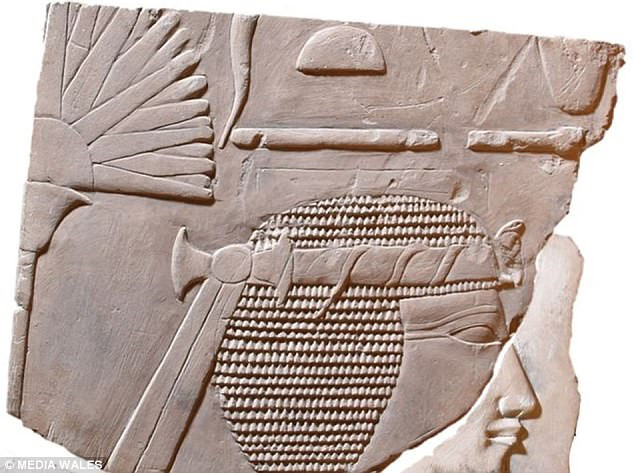The 3,500-year-old sculpture statue of the Egyptian pharaoh
Experts at Swansea University found two pieces of limestone believed to be engraved with Hatshepsut's face, the female pharaoh who once ruled Egypt.
Dr. Ken Griffin and his students discovered a pharaoh sculpture , one of five female pharaohs who ruled Egypt, while examining artifacts at Swansea University, Fox News reported on March 27. The sculpture consists of two pieces of limestone attached to each other and preserved here from tens of years ago.

The front (left) and the back (right) of the pharaoh Hatshepsut female sculpture.(Photo: BBC).
Griffin sees that the lines on this object resemble those carved in a Hatshepsut temple in Deir el-Bahri, Luxor, Egypt. The front is a figure of a human head missing the face and a fan part. The figure of a cobra bearing on the forehead and the hieroglyphic traces indicate this is a pharaoh. The back of the upper piece is part of the face with a short beard.
Hatshepsut ruled Egypt from about 1478 to 1458 BC. Early in power, Hatshepsut was described as a woman wearing a long skirt. However, she gradually changed with more masculine characteristics, including wearing fake beards.

Two pieces of sculpture after rearrangement.(Photo: Newsweek).
Researchers believe that the upper piece of the sculpture has been split and carved to complete the face in the lower piece. This also explains its unusual cut. The inscription on the back may be done by an ancient dealer, auctioneer or owner, to add value or appeal to the sculpture.
Swansea University brought this sculpture and some artifacts that belonged to the Henry Wellcome pharmaceutical merchant in 1971. Experts believe it originated from Deir el-Bahri. However, they need to conduct more thorough research to confirm this.
- The 4,300-year-old head statue was smashed by Egyptian pharaohs
- The true body of the Pharaoh statue 3,000 years has been excavated
- Find the giant statue of Egyptian pharaoh Psamtik I
- Egypt moved the pharaoh statue weighing 83 tons
- Pharaoh 'rises': Close up of the great 3,000-year-old sight of Egypt
- Discovered the Pharaoh Ramsses II statue in Egypt
- Restoring the statue of his sister pharaoh Tutankhamun
- Egypt announced two giant pharaohs
- Found 1,900 year old eagle statue between London
- Discovered the giant statue of the Egyptian king
- Restore the pharaoh statue after 3,200 years
- Discovering the statue of Queen Ti of Egypt
 Discovered an ancient centipede fossil 99 million years old
Discovered an ancient centipede fossil 99 million years old Discovered bat-like dinosaurs in China
Discovered bat-like dinosaurs in China Discovered a 200-year-old bronze cannon of the coast
Discovered a 200-year-old bronze cannon of the coast Discover 305 million-year-old spider fossils
Discover 305 million-year-old spider fossils